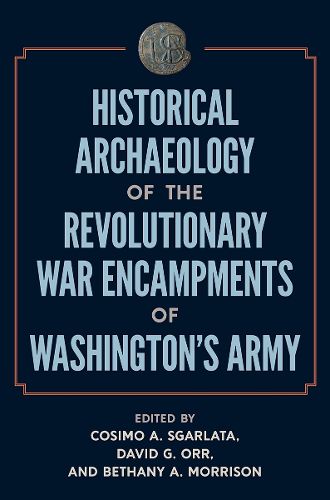Readings Newsletter
Become a Readings Member to make your shopping experience even easier.
Sign in or sign up for free!
You’re not far away from qualifying for FREE standard shipping within Australia
You’ve qualified for FREE standard shipping within Australia
The cart is loading…






This title is printed to order. This book may have been self-published. If so, we cannot guarantee the quality of the content. In the main most books will have gone through the editing process however some may not. We therefore suggest that you be aware of this before ordering this book. If in doubt check either the author or publisher’s details as we are unable to accept any returns unless they are faulty. Please contact us if you have any questions.
This volume presents recent archaeological and ethnohistorical research on the encampments, trails, and support structures of the Continental Army during the American Revolutionary War, illuminating the daily lives of soldiers, officers, and camp followers apart from the more well-known scenarios of military campaigns and battles.
The research featured here includes previously unpublished findings from the winter encampments at Valley Forge, Pennsylvania, as well as work from sites in Redding, Connecticut, and Morristown, New Jersey. Topics range from excavations of a special dining cabin constructed for General George Washington to ballistic analysis of a target range established by General von Steuben. Contributors use experimental archaeology to learn how soldiers constructed their log hut quarters, and they reconstruct Rochambeau’s marching route through Connecticut on his way to help Washington defeat the British at Yorktown. They also describe the under-recognized roles of African descendants, Native peoples, and women who lived and worked at the camps.
Showing how archaeology can contribute insights into the American Revolution beyond what historical records convey, this volume calls for protection of and further research into non-conflict sites that were crucial to this formative struggle in the history of the United States.
$9.00 standard shipping within Australia
FREE standard shipping within Australia for orders over $100.00
Express & International shipping calculated at checkout
Stock availability can be subject to change without notice. We recommend calling the shop or contacting our online team to check availability of low stock items. Please see our Shopping Online page for more details.
This title is printed to order. This book may have been self-published. If so, we cannot guarantee the quality of the content. In the main most books will have gone through the editing process however some may not. We therefore suggest that you be aware of this before ordering this book. If in doubt check either the author or publisher’s details as we are unable to accept any returns unless they are faulty. Please contact us if you have any questions.
This volume presents recent archaeological and ethnohistorical research on the encampments, trails, and support structures of the Continental Army during the American Revolutionary War, illuminating the daily lives of soldiers, officers, and camp followers apart from the more well-known scenarios of military campaigns and battles.
The research featured here includes previously unpublished findings from the winter encampments at Valley Forge, Pennsylvania, as well as work from sites in Redding, Connecticut, and Morristown, New Jersey. Topics range from excavations of a special dining cabin constructed for General George Washington to ballistic analysis of a target range established by General von Steuben. Contributors use experimental archaeology to learn how soldiers constructed their log hut quarters, and they reconstruct Rochambeau’s marching route through Connecticut on his way to help Washington defeat the British at Yorktown. They also describe the under-recognized roles of African descendants, Native peoples, and women who lived and worked at the camps.
Showing how archaeology can contribute insights into the American Revolution beyond what historical records convey, this volume calls for protection of and further research into non-conflict sites that were crucial to this formative struggle in the history of the United States.